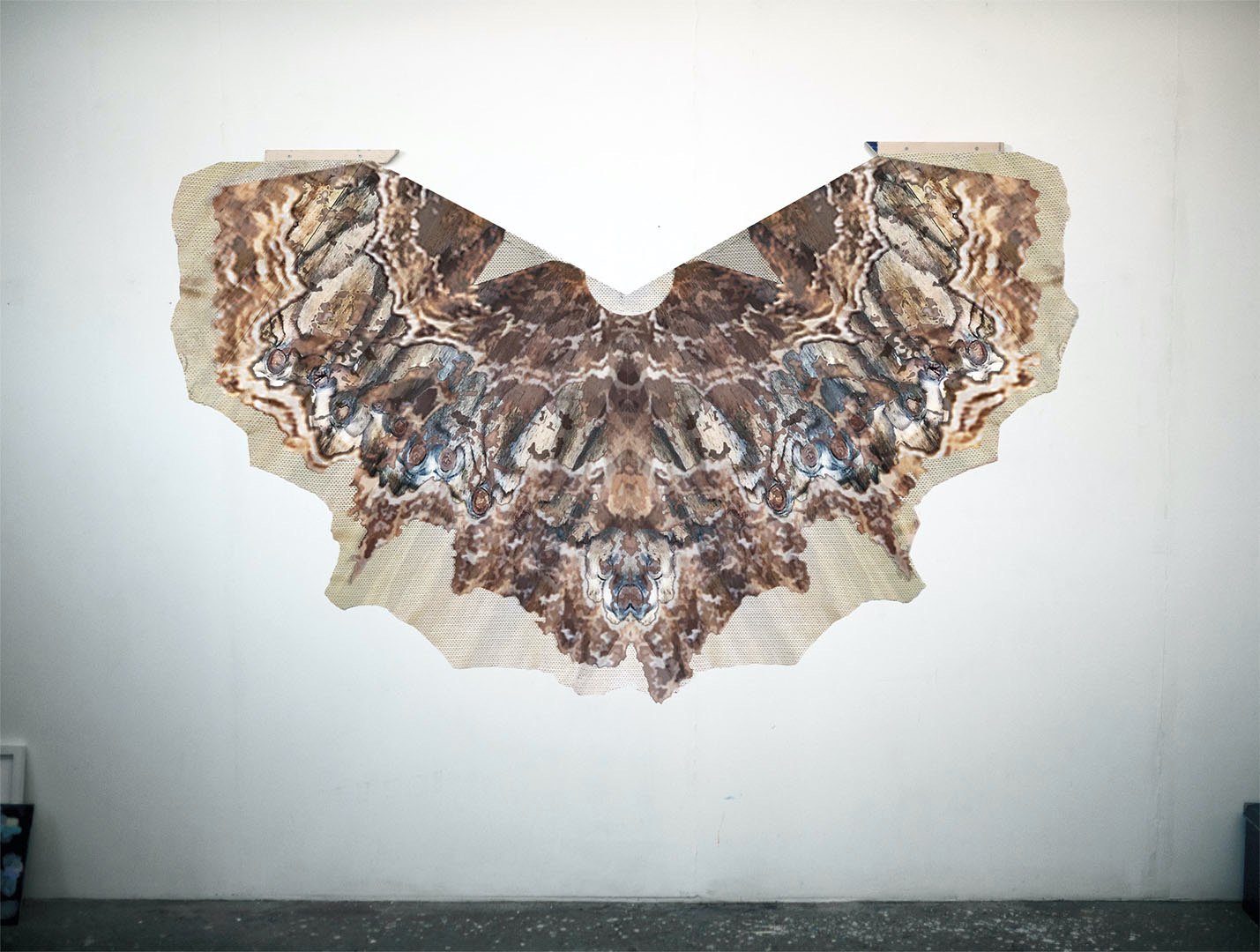Corpse Cones
Toadflax Brocade – Prototype 1. 8 August 2022
This 3D sketch uses redundant yarn cones from industrial textiles processes as a core from which to build works which reflect on the deaths experienced during my ‘citizen science’ activities recording moth species in urban London for Butterfly Conservation.
This is the first in a developing series which responds to the loss of individual insects which can be attributed to my personal actions, and contrasts this with the larger picture of biodiversity collapse which this activity seeks to prevent.
The humane practice of light-trapping only temporarily retains species before release, however there are occasional casualties – through human clumsiness, and more-than-human predation or exhaustion. The activity of collecting the data sensitises the collector, highlighting personal responsibility in a time of ecological emergency – my work is concerned with ways to extend these feelings into human culture more broadly.
TOWARDS LIGHT
Video with voiceover. 10 minutes 17 seconds. Katherine Pogson and Claire Shovelton.
Towards Light is a collaboration between multispecies artist/researcher Katherine Pogson and videographer Claire Shovelton. Katherine’s text voices the perplexed efforts of an amateur lepidopterist to make sense of their encounters with the more-than-human; Claire responds with a sensory film, navigating an imagined pheromonal world of light pollution and habitat destruction in search of fertility and love.
The work touches on themes of attraction, human interference and freedom of movement. In doing so, it considers the uses, and folly, of anthropomorphism as a tool for empathy, revelling in the unknowability of the ‘other’.
This work was first shown at the exhibition Places to Intervene in a System, Lumen Crypt gallery, Bethnal Green in August 2021.
NOURISHMENT
I-phone video. 8 minutes 10 seconds. September 2018.
Made from fragments of mobile phone footage, Nourishment was my first video produced at a time of ‘creative block’ when my object-making practice had disintegrated. A ‘work-in-progress’ deadline with an invited audience proved a turning point. I was forced to include myself in my work more directly than before, and embrace an auto ethnographic approach.
Dusk fell, people stopped drinking and gathered around the pool of light projected onto the wall. Surrounded by lepidoptery equipment, expired moths, and pieces of abandoned textile work, I put on my head torch and began.
Holeslack
Digital cartoon for an embroidered wall hanging. 2017 - 18.
New Year’s Eve, Cumbria. A pale moth flattens itself against a farmhouse window. From inside, the creature’s underside is lit up against the darkness outside. How does it survive in this place, at this time?
An encounter with the Winter moth provided the starting point for this early exploration of how to ‘materialise’ the connection between moths and textiles.
Empress of skye
Much worn agnès b shoe, Sylko cotton thread. 2017.
In a heatwave on the Isle of Skye, a female moth of the Emperor species laid five eggs on the side of my foot. The intention with which she did this, and my subsequent failure to raise the brood, directed me towards one of the key concerns within my practice: how to communicate a sense of personal responsibility for those creatures rendered fragile by human actions?
Wrong Wainscot
Reworked vegetable-tanned leather, ink, silver leaf, button polish. 2017.
With origins in my previous practice as a designer-maker, this off-cut went through a number of transitions. I began to volunteer at Woodberry Wetlands, where I encountered the reed-loving species which have such evocative textile names, the Wainscots; Silky, Stripy, Smoky and Obscure….
Can object-making create a dialogue about our relationship with ‘nature’? And is leather an appropriate medium for doing so?
Exhibited at The Old Fire Station, Oxford, June 2017.





